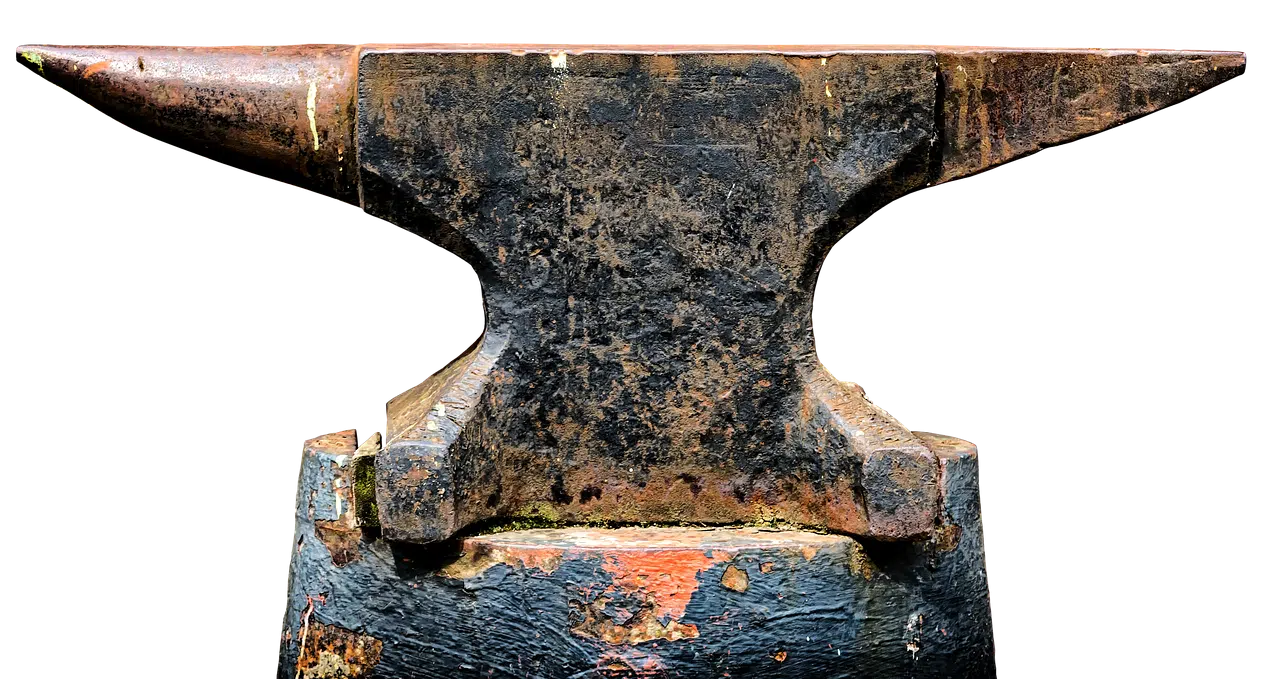
The anvil is used to forge metals.
The anvil is the metal or stone support used to forge steel, iron or other metals . On this block, which can end in a point, the metals are struck with the hammer or other tool.
Anvils usually weigh more than fifty kilograms. In any case, there are smaller anvils that are used to sharpen instruments or in the field of goldsmithing and jewelry .
Symbolic use of the term anvil
Anvil is also used symbolically, by analogy to the characteristics of this element. The subject who has great physical strength or who has perseverance and patience can be classified as an anvil.
For example: “The experienced striker, despite his age, is still an anvil,” “My uncle had to face all kinds of difficulties throughout his life, but he is an anvil that always remains firm.”

An ossicle in the ear is called an incus.
The concept in anatomy
In the field of anatomy , one of the small bones found in the ear of mammalian animals is called the incus. It should be remembered that the ear can be divided into three sectors: the inner ear , the middle ear and the outer ear . The incus is located in the middle ear, forming part of a chain of ossicles along with the stapes and the malleus .
Similar in appearance to the anvil used by blacksmiths, this bone contributes to the transmission of vibrations from the outside to the inside.
The story "Paco Yunque"
The well-known Peruvian writer César Vallejo , who lived between 1892 and 1938 and dedicated himself to both narrative and poetry, was the author of a story titled "Paco Yunque" , which was published posthumously since the first editor to receive He considered the manuscript too sad to market.
The title of this story is, in turn, the name of the protagonist, a very poor and shy boy who must face a series of difficult and humiliating situations during his first day at school. His mother works as a domestic worker for a family of English origin, the Grieves , and it is precisely the son of his employer who mistreats Paco in the first place.
It is very difficult for Paco Yunque to face an environment so different from the one he is used to seeing since his early childhood: he had never been surrounded by so many people, and this also means that he does not know how to relate to them following their same social norms . Humberto Grieve justifies his abuse towards Paco by pointing out that he is his servant, and the professor does not intervene as he should because he prefers to protect his own interests, given the influence that the English family has in the town.
Vallejo had worked as a teacher in an elementary school, and this helped him a lot when building the story and defining each of the characters. This work is a very important component of children's literature, since it is a denunciation against the abuse of power , something that many children still have to endure today, regardless of their background. Paco Yunque is a poor child and faces the weight that money has in society , but he also represents any person who cannot easily adapt to the demands of his environment and who is forced to suffer humiliation just for being "different." » .
The notion in other areas
In the cartoons of the North American company Warner Bros Entertainment, Inc , especially in series such as Looney Tunes and Tiny Toon Adventures , the anvil is one of the most common elements, although it is used in an unrealistic way: characters of all sizes and Possible physical builds are capable of picking up an anvil and easily throwing it at another, simply causing a lump on the head that disappears almost immediately.
El Yunque , finally, is the name of a forest and a mountain in Puerto Rico and another mountain in Cuba .
